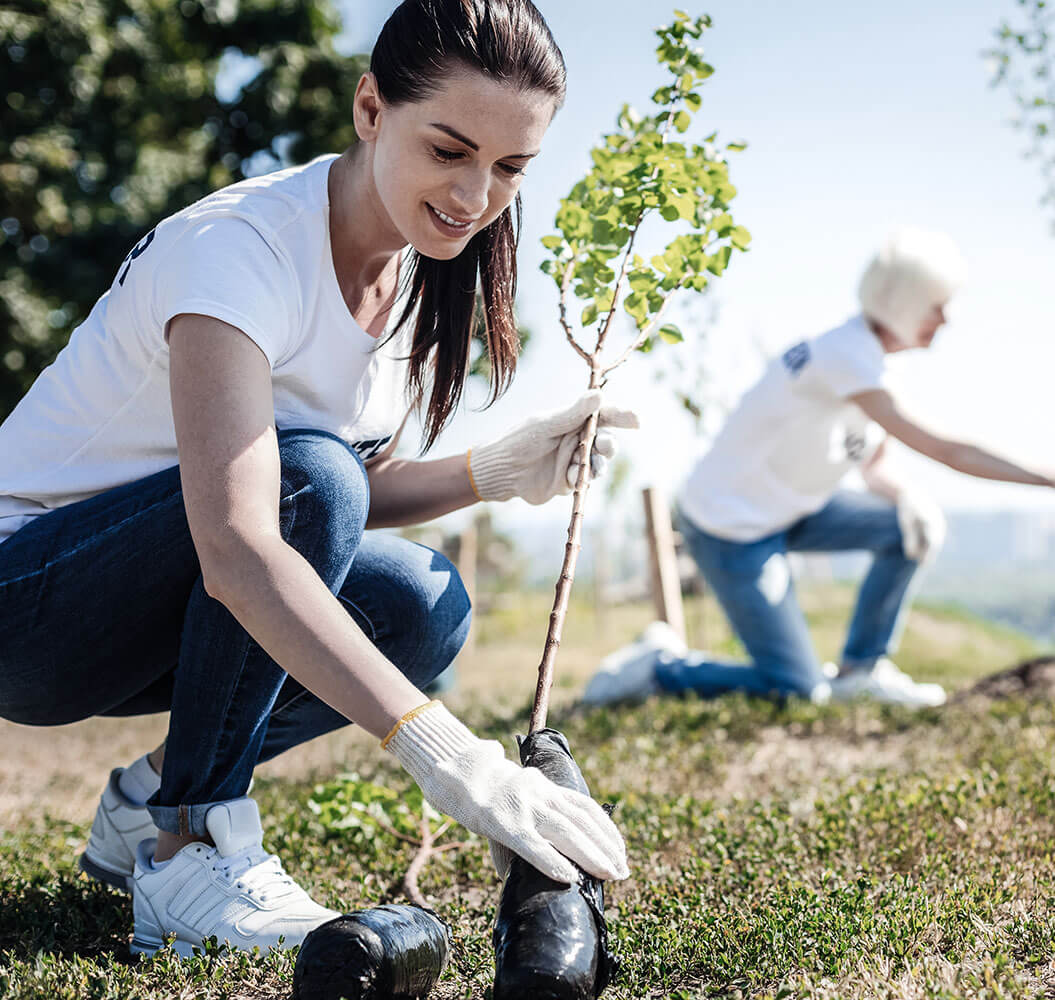Make Recycling A Necessity In Everyday Life
Recycling might have gained traction in the 1970s thanks to the environmental movement, but the concept has been around for hundreds if not thousands of years. Before the Industrial Age, there was no way to produce goods on a massive scale, making recycling a necessity in everyday life.
Of course, there weren’t large-scale recycling programs like you see today. In general, recycling was done within households.
Large Scale Recycling
Large-scale recycling didn’t come into play until after the Industrial Age. Companies could make products quickly and cheaply, leading to disposable items. While convenient, it led to a massive increase in trash, which led to environmental issues.
It wasn’t until the 1930s and 1940s that recycling became an important part of American society. The Great Depression forced companies and people to reuse and recycle as they could not afford new materials. Unfortunately, after the Great Depression, the economy saw a huge economic boom, which ultimately pushed recycling efforts to the wayside until the 1960s and 1970s environmental movement.
Large scale recycling started in the 1970s as landfills started filling up and people became more concerned with where their trash was going. In 1972 the first recycling mill to accept plastics began operation and since then, recycling has become mainstream.
While the majority of people support recycling, In America the national average recycling rate is only around 35 percent. However, the number increases year-over-year. It also helps that is has become even easier to recycle as technology has improved to the point where you no longer need to sort the metal cans from the glass bottles as recycling plants use a variety of technology of infrared scanners to magnets to sort your recycling.
Clean Recyclable Plastics
Even with new technology, you still need to do a little leg work on your end. For example, not all plastics are created equal.
While most plastics can potentially be recycled, many consumer recyclers won’t take anything with a number of 2. Luckily, most plastic items you use probably are #1 - PET and #2 HDPE, both of which are fine to recycle.
Besides plastic, you can also recycle glass, aluminum, and paper. For each one, you should understand your local recycling center’s rules to ensure everything will be recycled.
It’s important to know exactly what is recyclable and what is not. Things like extension cords, rain jackets, etc. should not get put in the recycling bin. It might seem like no big deal, but it slows down the sorting of recycled materials.
Even if sort your trash and recycling perfectly, there could still be other reasons that they don’t get recycled. So how exactly do you ensure your plastic, metal, and glass items get recycled? One of the first steps you should take is cleaning out your recyclable items.
Do you need to clean recyclable items
Clean Recyclable Items - Plastic Straws
The short answer is yes. You do need to clean recyclable items. With that said it depends on your local recycling system. If they follow a single-stream process then you need to clean out your glass, plastic, and aluminum items.
As mentioned earlier, single-stream recycling uses sophisticated technology to separate various materials. However, this also leads to easier contamination especially when it comes to paper. If there is any leftover food or residue on a glass bottle or plastic tub, this could be transferred to paper products, rendering them unrecyclable.
Dual-stream recycling is much more forgiving than single-stream as the plant separates paper from the other materials. Still, it’s a good idea to clean out your items as leftover food or residue can gum up the machinery, which can ultimately lead to delays. While the majority of recycling centers require people to rinse their items, some centers will do it for you. If you’re unsure, it’s a good idea to clean out the jars anyway. Of course, if you’re concerned about water conservation, you should call your local recycling center and ask them for their recycling best practices.
Benefits of cleaning
Besides reducing contamination, there are many other benefits of cleaning your items before sending them off to get recycled for both you and the recycling center. The biggest benefit is reducing odors. Many recycling centers will only pick up recyclables once or twice a week. That means 5-6 days of food residue sitting in a warm, enclosed area. That’s just for you. Once it gets picked up, it will often take around 24 hours to get sorted and baled. From there, it might sit in a warehouse for weeks or even months before they get sold. Once sold, they’ll get cleaned before getting ground up, melted, and chipped into flakes. If you thought the smell of your trash sitting in your house for 4-5 days is bad, imagine what spoiled food smells like after a month! It’s probably enough to make you gag and can cause the recycling center’s employees to throw up.
Benefits of cleaning recyclables
Besides dealing with bad smells coming from the recycling bin, leftover food residue can also attract pests. This could lead to unwanted ants, wasps, bees, raccoons, and even bears. While the larger creatures will generally just be an annoyance to you, the insects can remain inside the various containers to the recycling plant and sting workers at the facility. More importantly, if they don’t leave the bottle, this could lead to serious contamination issues, leading to lost time and money for your local center.
Of course, the biggest benefit is knowing that you’re not cross-contaminating other items. That means you’re at least doing your part in making sure your recycling center remains efficient and doesn’t lose any money. More importantly, it means you aren’t contributing to the ever-growing landfills.
Tips on how to clean items
So how do you clean out your recyclables? You don’t have to make sure all of your containers are spotless, though that is always appreciated. Still, a few spots won’t slow down the process. For most items, you can fill the container with water and soap and vigorously shake the water inside. You’ll generally get most of the leftover residue and it should be clean enough for recycling. You can use your dishwasher to thoroughly clean glass containers, just make sure to remove any labels as these can lead to serious problems down the line. You should also make sure to empty any leftover liquids from bottles. That includes water!
Tips to clean recyclable items
For sticky substances, you will have to use a scrub brush or scraper to remove everything. Soap also makes it easier to remove any leftover residue. If you don’t have the time or capabilities to clean these containers, throw them out! Do not place them in the recycling dirty as this will lead to contamination.
The same rule applies to plastic bags. You need to make sure they are free of any contaminants and residue. The best way to make sure they are clean is by turning them inside out and shaking them. This will get rid of any excess crumbs. If there is a sticky residue on the inside of the back you will need to wash this off. Not all city recycling centers will pick up plastic bags. If that’s the case, you should contact them to see if there is another option. Some retailers accept back plastic shopping bags from any store for recycling.
Place clean items in the recycling bin
Once you have checked all of your containers to make sure they are recyclable and cleaned them, you can place them into the appropriate bin. Don’t have a bin? Contact your recycling center to get one. If you live in an apartment complex and you don’t see any bins labeled recycling, contact your super or management company to get one.
Place clean recyclables in appropriate recycling bin
Remember, black garbage bags are not recyclable! That means you’ll have to put your items directly into the bin. If you collect your recyclables in a bag in your home, you should dump the contents out and throw out the plastic bag. The point is to avoid any and all possible cross-contamination!
Cardboard and Paper Guidelines
When it comes to paper products, you have to make sure they are mostly clean. That means it has to be free of contaminants like food and oil/grease. Things like used paper towels, paper plates, and greasy cardboard boxes should go in the trash. If there are only a few small issues, you can recycle them.
Follow your local cardboard and paper guidelines for recyclables
Both paper and cardboard can be placed in the same recyclable bin. Shredded paper, on the other hand, should not go into the outside bin as it can get blown away, causing litter. Instead, call your local curbside program for guidelines. Paper is one of most profitable recyclable items, so make sure you don’t throw out anything even if it’s crumbled or torn. So long as there aren’t any serious issues like grease stains or food residue, everything is okay to recycle.
Throw Away Heavily Soiled Items
Throw away heavily soiled recyclable items
Sometimes, you just can’t get everything out of a container. This might be for various reasons such as awkward container shapes, sticky residue that cannot be removed from containers, or just a very greasy pizza box. If you find yourself in this situation, the best thing to do is throw the items in the trash. It might not seem like the best option, but it definitely keeps your recycling center running smoothly.
When throwing away large items like cardboard boxes, make sure to break them down before throwing them into the trash. Smaller items you can throw away like normal. If you’re eating out at a fast-food restaurant, make sure to follow their recycling rules.
Reduce Reuse and Recycle Clean Recyclables For A Better World
Remember that ‘recycle’ is the last R in the Reduce, Reuse, and Recycle slogan. Your first two steps should be to reduce the amount of waste you produce by avoiding single-use items and then to reuse anything you can. Of course, there will be times where you cannot reduce or reuse items, so in those cases, you should do your best to clean and recycle.
It’s very important to properly clean your recyclables and sort them correctly. It might take a few extra steps for you, but it will make the process much faster and simpler for your city. When recycling, make sure you are only putting items that can be recycled into the bin. If in doubt, contact your local recycling facility for more information.
Rebekah Pierce is a professional social blogger and has worked on several online publications including Citrus Sleep. Rebekah is an experienced content writer and copyeditor. You will find many of her works throughout CitrusSleep.com that cover a wide array of subjects including sleep education, natural, sleep products, electronics, fashion and many more. She is passionate about her work and family.
Follow Lisa at Rebekah Pierce




















